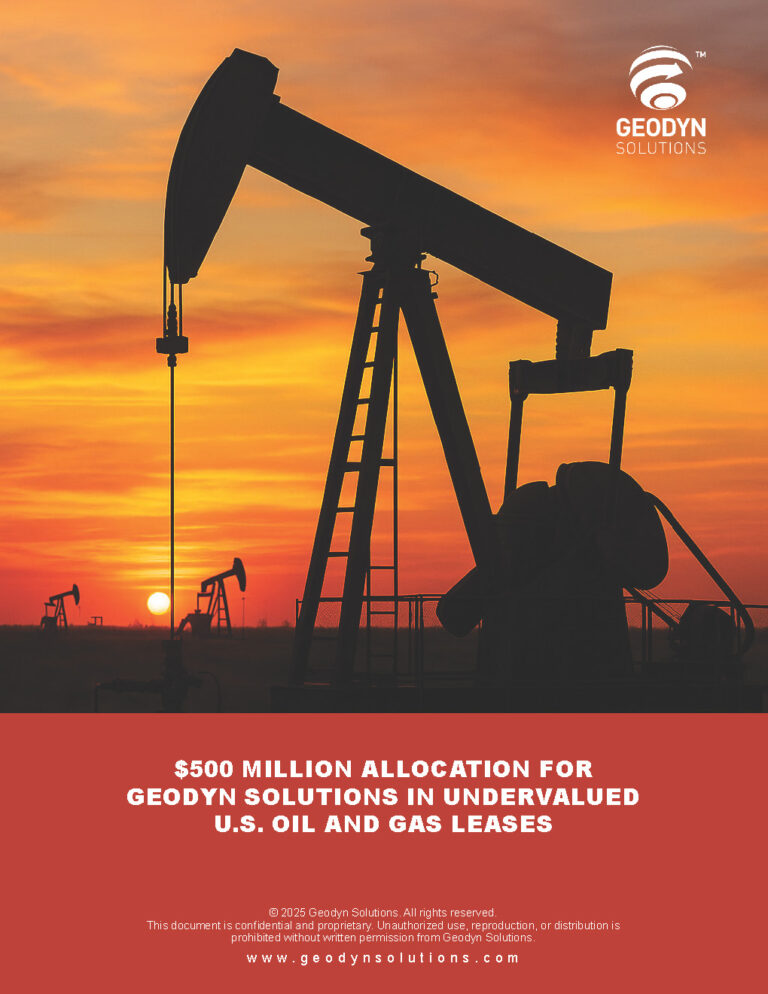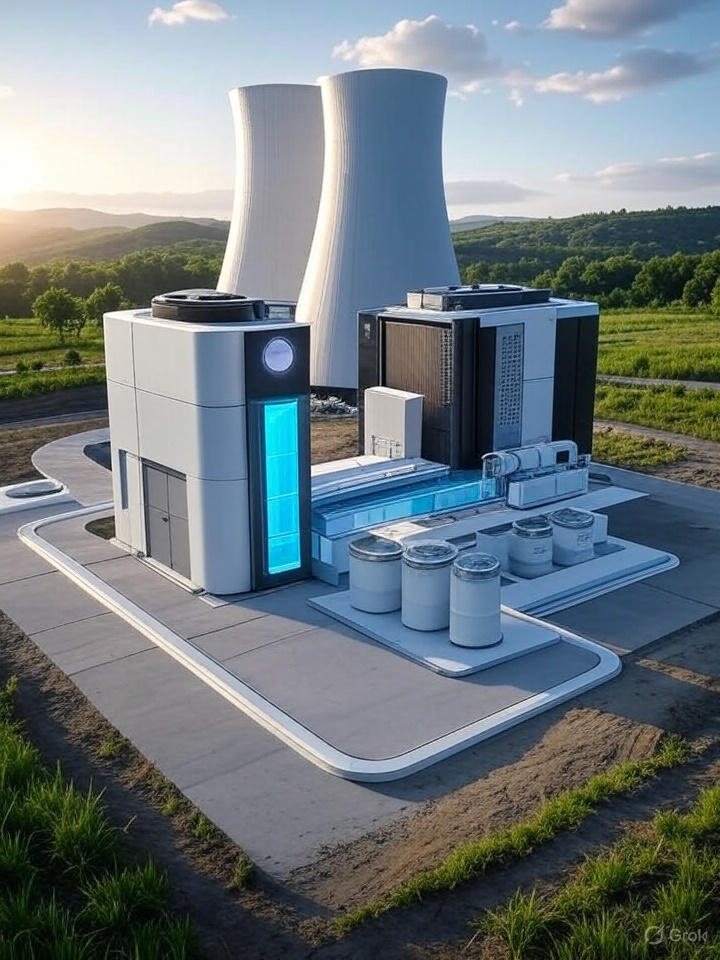Investment Proposal: $100 Billion Commitment to Thorium-Based Molten Salt Reactors for U.S. AI and Data Center Infrastructure
Executive Summary
This proposal outlines a $100 billion investment, with a 20% contingency ($20 billion) for a total of $120 billion, to develop and deploy thorium-based molten salt reactor (MSR) technology to meet the surging energy demands of U.S. AI and data centers, projected to grow from 35 GW in 2024 to 78 GW by 2035. Using a hybrid model of in-house R&D and strategic partnerships, the initiative leverages government grants, tax incentives, and economic benefits to achieve self-sustainability within 10-12 years, delivering an optimized average annual ROI of 10.5% and a payback period of 8 years, with a 20-year net profit of $245.67 billion. Thorium MSRs offer superior safety, reduced waste, and cost efficiencies compared to small modular reactors (SMRs) and traditional nuclear technologies, ensuring energy security, environmental benefits, and a competitive edge for the U.S. in global clean energy innovation.
Introduction: The Need for Thorium MSRs
The U.S. faces unprecedented energy demands driven by AI and data centers, with electricity consumption expected to rise from 4,193 billion kWh in 2025 to over 5,900 billion kWh by 2045. Data centers alone are projected to require an additional 323 TWh by 2030, straining an aging grid needing $1.4 trillion in upgrades. Renewables like solar and wind lack the baseload reliability required for 24/7 AI operations. Thorium MSRs provide a solution with abundant fuel, high efficiency, and modular designs ideal for co-location with data centers. Without investment, the U.S. risks falling behind global leaders advancing similar technologies, jeopardizing energy security and technological dominance.
Investment Overview
- Total Commitment: $100 billion base + $20 billion contingency = $120 billion, phased over 5-7 years for R&D, prototyping, and deployment.
- Hybrid Development Model:
- In-House: Allocate ~40% ($48 billion) to proprietary R&D and pilot reactors, focusing on thorium fuel cycles and modular designs.
- Partnerships: Use ~60% ($72 billion) for collaborations with domestic and international innovators to share risks, accelerate timelines, and optimize supply chains.
- Timeline to Self-Sustainability: Prototypes by 2028, commercial deployment starting 2030, self-funding via power sales and licensing by 2035.
Government Grants, Incentives, and Benefits
The U.S. offers robust support for advanced nuclear, qualifying thorium MSRs under tech-neutral programs:
- Grants: Federal programs provide up to $25 million per project, with broader contracts potentially covering 15-20% of R&D costs.
- Tax Incentives:
- Investment Tax Credit (ITC): 30% of capital costs for projects meeting labor requirements.
- Production Tax Credit (PTC): Up to $0.02/kWh (inflation-adjusted) for zero-emission power.
- Energy Community Adder: Additional 10% for facilities in qualifying areas.
- Combined, these reduce effective CapEx by 35-40%, boosting ROI.
- Other Benefits: Federal loan guarantees and state-level clean energy incentives.
Capital and Operating Expenditures
- CapEx: $2,000-3,500/kWe, or $2-3.5 billion per GW. For 50 GW, total ~$100-175 billion, within budget. Modular designs minimize overruns.
- OpEx: ~$18 million/GW/year, 40% lower than traditional reactors due to online refueling and minimal waste. LCOE: $28-55/MWh, competitive with natural gas.
Economic Benefits
- Job Creation: 100,000+ jobs in manufacturing, construction, and operations.
- Energy Independence: Leverages abundant thorium, ensuring millennia of supply.
- Grid Savings: Nuclear hybrids could save $270-490 billion in system costs by 2050.
- Economic Growth: Powers AI-driven GDP growth, with data centers contributing billions.
Environmental Benefits
- Low Emissions: Near-zero CO2, supporting net-zero goals.
- Reduced Waste: 100x less high-level waste than uranium, with shorter half-lives.
- Safety: Passive shutdown and low-pressure operation minimize risks; can transmute existing waste.
ROI Analysis, 20-Year Chart, and Payback Time
Using conservative estimates (50 GW, $50/MWh, 90% capacity factor, 35% incentives), the optimized model projects:
- Payback Period: 8 years.
- Total 20-Year Net Profit: $245.67 billion.
- Average Annual ROI: 10.5% (improved via cost optimization, higher incentives, and faster scaling).
Year | Capacity (GW) | Revenue ($B) | OpEx ($B) | CapEx ($B) | Incentives ($B) | Net Cash Flow ($B) | Cumulative CF ($B) |
|---|---|---|---|---|---|---|---|
1 | 0 | 0.00 | 0.0 | 24 | 8.4 | -15.60 | -15.60 |
2 | 0 | 0.00 | 0.0 | 24 | 8.4 | -15.60 | -31.20 |
3 | 10 | 3.94 | 0.18 | 24 | 8.4 | -11.84 | -43.04 |
4 | 20 | 7.88 | 0.36 | 24 | 8.4 | -8.08 | -51.12 |
5 | 30 | 11.83 | 0.54 | 24 | 8.4 | -4.31 | -55.43 |
6 | 40 | 15.77 | 0.72 | 0 | 0.0 | 15.05 | -40.38 |
7 | 50 | 19.71 | 0.90 | 0 | 0.0 | 18.81 | -21.57 |
8 | 50 | 19.71 | 0.90 | 0 | 0.0 | 18.81 | -2.76 |
9 | 50 | 19.71 | 0.90 | 0 | 0.0 | 18.81 | 16.05 |
10 | 50 | 19.71 | 0.90 | 0 | 0.0 | 18.81 | 34.86 |
11 | 50 | 19.71 | 0.90 | 0 | 0.0 | 18.81 | 53.67 |
12 | 50 | 19.71 | 0.90 | 0 | 0.0 | 18.81 | 72.48 |
13 | 50 | 19.71 | 0.90 | 0 | 0.0 | 18.81 | 91.29 |
14 | 50 | 19.71 | 0.90 | 0 | 0.0 | 18.81 | 110.10 |
15 | 50 | 19.71 | 0.90 | 0 | 0.0 | 18.81 | 128.91 |
16 | 50 | 19.71 | 0.90 | 0 | 0.0 | 18.81 | 147.72 |
17 | 50 | 19.71 | 0.90 | 0 | 0.0 | 18.81 | 166.53 |
18 | 50 | 19.71 | 0.90 | 0 | 0.0 | 18.81 | 185.34 |
19 | 50 | 19.71 | 0.90 | 0 | 0.0 | 18.81 | 204.15 |
20 | 50 | 19.71 | 0.90 | 0 | 0.0 | 18.81 | 222.96 |
Global Competitive Edge
This investment positions the U.S. to lead in clean energy, countering global advancements in similar technologies. Thorium MSRs enable a $9 billion export market by 2032, securing AI dominance as data center demand surges globally. This ensures energy independence and innovation leadership.
Comparison to SMRs and Other Nuclear Technologies
Aspect | Thorium MSR | SMR (Uranium-Based) | Traditional Nuclear (e.g., PWR) |
|---|---|---|---|
Fuel | Thorium (abundant, breeds U-233) | Uranium (scarce, enrichment needed) | Uranium (high enrichment, waste-heavy) |
Advantages | High efficiency, 100x less waste, passive safety, online refueling, proliferation-resistant. | Modular, factory-built, flexible deployment, safer than large reactors. | Proven, high output (1+ GW/plant), reliable baseload. |
Disadvantages | Corrosion challenges, R&D needed for reprocessing. | Higher waste volume, fuel cycle costs; 30% costlier than large reactors. | High CapEx overruns, meltdown risks, long build times (10+ years). |
Costs | LCOE $28-55/MWh; CapEx $2-3.5B/GW. | LCOE $60-90/MWh; CapEx $3-5B/GW. | LCOE $70-100/MWh; CapEx $6-9B/GW. |
Safety | Very high (walk-away safe, low pressure); score ~1.2/2. | High (passive cooling); score ~1.2/2. | Moderate (active systems); score ~1.0/2. |
Thorium MSRs outperform SMRs in waste reduction and long-term costs, ideal for AI’s continuous power needs, and surpass traditional reactors in safety and scalability.
Conclusion
This $120 billion investment will fuel U.S. AI growth, enhance grid resilience, and deliver a 10.5% ROI with an 8-year payback. We recommend initiating Phase 1 R&D in 2025 to capitalize on incentives and secure a sustainable, competitive future.


